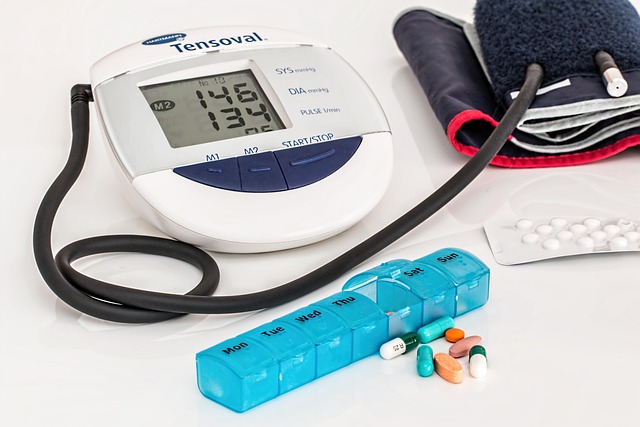Discover the Future of Dental Implants: Screwless Solutions
If you’ve been considering dental implants but are concerned about cost, complexity, or recovery time, screwless dental implant systems are an emerging option to explore. These systems can streamline certain steps of restoration, potentially reducing chair time or laboratory work in some cases. However, availability, pricing, and clinical suitability vary by technology, clinician experience, and region. A dental consultation is recommended to assess whether screwless options may be appropriate for an individual patient’s needs.

Dental implant technology has transformed how individuals approach tooth replacement, offering solutions that closely mimic natural teeth in both appearance and function. While traditional screw-retained implants have been the standard for decades, recent developments have introduced screwless alternatives that are gaining attention within the dental community. These innovative systems present a fresh perspective on implant design and may offer distinct advantages for certain patients seeking restorative dental work.
What Are Screwless Dental Implants?
Screwless dental implants represent a departure from conventional implant designs that rely on screws to attach the crown or prosthetic tooth to the implant post. Instead of using a screw mechanism, these systems typically employ cement or other bonding methods to secure the restoration directly to the abutment. The implant post itself is still surgically placed into the jawbone, where it integrates through a process called osseointegration, but the method of attaching the visible tooth portion differs significantly. This design eliminates the access hole typically needed in screw-retained crowns, potentially offering aesthetic and functional benefits. The absence of a screw channel means the crown can be crafted without structural compromises, allowing for more natural tooth contours and potentially improved strength in certain cases.
Why Are Screwless Implants Becoming a Popular Choice?
Several factors contribute to the growing interest in screwless implant systems among both dental professionals and patients. One primary reason is the aesthetic advantage they can provide, particularly for front teeth where appearance is paramount. Without the need for a screw access hole, the crown can be designed with greater attention to natural tooth anatomy and translucency. Additionally, some patients and dentists appreciate the simplified restoration process, as cementing a crown can be more straightforward than managing screw mechanics. The elimination of potential screw loosening, a complication that occasionally occurs with traditional implants, is another appealing factor. Furthermore, in cases where the implant angle is less than ideal, cement-retained restorations can sometimes compensate more effectively than screw-retained alternatives, making them a practical solution in complex anatomical situations.
How Do Screwless Implants Work?
The fundamental mechanism of screwless implants involves a two-stage process similar to traditional implants, but with a different attachment method for the final restoration. First, the titanium implant post is surgically inserted into the jawbone, where it remains for several months to allow for proper integration with the bone tissue. Once healing is complete, an abutment is attached to the implant post, which may still involve a screw connection at this level in many systems. The crown or prosthetic tooth is then cemented onto this abutment using dental cement, creating a permanent bond. This cementation process is similar to how traditional crowns are attached to natural teeth. The strength of modern dental cements ensures a secure connection that can withstand normal chewing forces. Some newer systems are exploring truly screwless designs throughout, using friction-fit or other mechanical retention methods, though these remain less common than cement-retained approaches.
The Key Benefits of Screwless Dental Implants
Screwless dental implants offer several notable advantages that make them attractive options for appropriate candidates. The aesthetic improvements are often most apparent, as the absence of a screw access hole allows for seamless crown design with optimal light transmission and color matching. This can be particularly important in the smile zone where even minor imperfections may be noticeable. From a structural perspective, eliminating the screw channel can enhance crown strength in certain designs, as there is no weak point where material has been removed. Patients may also experience improved comfort, as there are no screw components that could potentially loosen or cause irritation over time. The cementation process can be less technique-sensitive in some situations, potentially reducing chair time and simplifying the restoration procedure. Additionally, for patients with specific anatomical challenges or implant positions that make screw access difficult, cement retention provides a practical alternative that maintains function and appearance.
Cost Considerations and Provider Comparisons
When considering screwless dental implants, understanding the financial aspects is essential for making an informed decision. Costs can vary significantly based on location, provider experience, and the complexity of individual cases. In the United Kingdom, dental implant procedures typically range from moderate to substantial investments, with screwless options generally falling within similar price ranges to traditional implants.
| Provider Type | Services Offered | Cost Estimation |
|---|---|---|
| Private Dental Practices | Single screwless implant with crown | £2,000 - £3,500 |
| Specialist Implant Clinics | Comprehensive assessment and placement | £2,500 - £4,000 |
| University Dental Hospitals | Treatment with supervised specialists | £1,500 - £2,800 |
| Multi-location Chains | Standardized implant procedures | £1,800 - £3,200 |
Prices, rates, or cost estimates mentioned in this article are based on the latest available information but may change over time. Independent research is advised before making financial decisions.
Which Patients Might Be Suitable Candidates for Screwless Implants?
Determining suitability for screwless dental implants requires careful evaluation by a qualified dental professional. Generally, patients who are good candidates for traditional implants may also be suitable for screwless alternatives, provided certain conditions are met. Those seeking implants in the anterior (front) region of the mouth, where aesthetics are particularly important, often benefit most from cement-retained restorations. Patients with adequate bone density and healthy gums are essential prerequisites, as these factors affect implant success regardless of the retention method. Individuals who have experienced screw loosening with previous implants might find screwless options appealing. However, patients who may need easier access for future maintenance or adjustments might be better served by retrievable screw-retained designs. Factors such as bite force, oral hygiene habits, and the specific location of the missing tooth all influence the recommendation. A thorough consultation with an experienced implant dentist, including diagnostic imaging and treatment planning, is necessary to determine the most appropriate approach for each unique situation.
Screwless dental implants represent an evolving area of restorative dentistry that offers meaningful benefits for appropriately selected patients. While they may not be suitable for every situation, their aesthetic advantages, structural considerations, and potential for simplified procedures make them a valuable option in the modern dental toolkit. As with any dental treatment, thorough research, professional consultation, and realistic expectations are key to achieving satisfactory outcomes.




